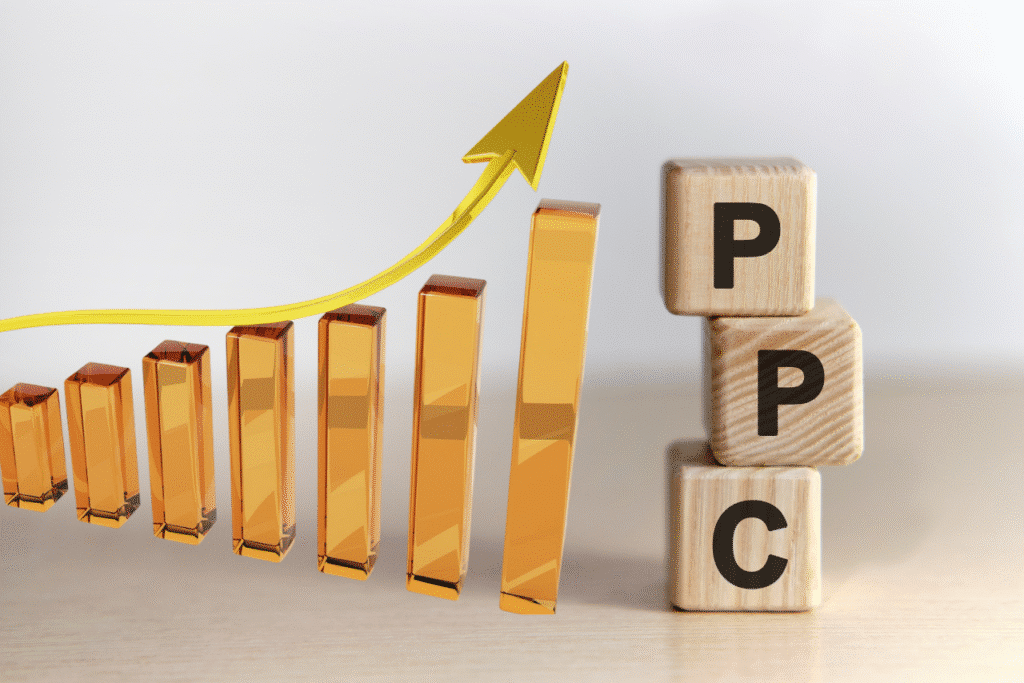While PPC promises quick visibility and immediate traffic, many business owners wonder: How long does it actually take before PPC starts generating meaningful results? Understanding the timeline of a PPC campaign is crucial to setting realistic expectations, managing your budget wisely, and ultimately turning clicks into customers.
In this comprehensive guide, we’ll break down the typical PPC timeline for home services and moving companies, explaining what happens at each stage, how to optimize your campaigns, and what you can do to accelerate success. Whether you’re just getting started or looking to improve your existing PPC efforts, this guide will help you navigate the journey from your first click to a steady stream of new business.
Understanding PPC and Its Importance for Your Business
PPC is an advertising model where you pay each time someone clicks on your ad. Platforms like Google Ads allow you to target people who are actively searching for the services you offer, such as plumbing repairs, electrical work, or moving services. For businesses in home services and moving, PPC is especially valuable because it connects you with customers who have immediate needs, often leading to faster conversions than other marketing methods like SEO or social media.
Because PPC puts your business at the top of search results or in front of targeted audiences, it can generate traffic and leads quickly. However, the timeline for seeing meaningful results depends on how well your campaign is planned and managed.
Learn more about digital marketing strategies.
Week 1-2: Planning and Setting Up Your PPC Campaign
The first step in launching a PPC campaign is careful planning and setup. This involves researching the keywords your potential customers use when searching for your services, analyzing what your competitors are doing, and defining who your target audience is based on location and other factors. For home services and moving companies, local targeting is critical because your customers are usually searching for providers in their immediate area.
Creating compelling ads is also part of this stage. Your ad copy should clearly communicate what you offer and include a strong call-to-action, like “Call Now for a Free Estimate” or “Book Your Move Today.” Setting up conversion tracking tools is equally important to measure how many clicks turn into actual leads or calls.
This setup phase usually takes one to two weeks. Rushing through it can lead to wasted ad spend and poor performance, so it’s important to be thorough.
Week 2-3: Launching the Campaign and Collecting Data
Once your campaign goes live, your ads will begin showing to your target audience. During the first week or so, the primary goal is to collect data on how your ads are performing. You will start seeing metrics like how many people are seeing your ads (impressions), how many click on them (click-through rate), and how much each click costs you.
At this point, don’t expect a flood of leads just yet. The initial data helps you understand if your ads are relevant and if your targeting is accurate. It’s also essential to make sure your conversion tracking is working correctly so you can measure actual results.
Week 3-4: Optimizing Your Campaign for Better Performance
After gathering initial data, it’s time to make adjustments. This means pausing keywords that aren’t delivering results, testing new ad copy, and refining your bids to get the best balance between cost and visibility. You’ll also want to look at your landing pages—the pages users arrive at after clicking your ad—to ensure they are clear, easy to navigate, and encourage visitors to take action, such as calling your business or filling out a contact form.
For moving companies and home service providers, having a landing page that highlights your unique selling points and includes a straightforward way to contact you can significantly boost conversions.
By the end of this optimization phase, which typically lasts a couple of weeks, you should begin to see improvements in how many people click your ads and how many of those clicks turn into leads.
Month 2-3: Generating Consistent Leads and Understanding Your Audience
After about two to three months, your PPC campaign should start generating a steady flow of leads. You will have a clearer picture of which keywords and ads are driving the most inquiries and what your average cost per lead looks like.
This is also the time to analyze your audience data. You might discover that certain neighborhoods or demographic groups respond better to your ads, or that particular services generate more interest. Using these insights, you can adjust your targeting to focus on the most profitable segments.
For example, a moving company might find that ads targeting families moving within the city perform better than those aimed at commercial moves. With this knowledge, you can tailor your messaging and budget accordingly.
Month 3-6: Scaling Your PPC Campaign and Long-Term Growth
Between three to six months, your campaign should be well-optimized and producing reliable results. You’ll have refined your keyword list, improved your ad copy, and optimized your landing pages. At this stage, you can consider increasing your budget to reach more potential customers or expanding your geographic targeting to nearby areas.
You might also explore advanced PPC strategies, such as remarketing, which targets people who visited your website but didn’t convert the first time. This can help keep your business top of mind and encourage more conversions.
By this point, PPC should be a consistent source of leads and a key component of your marketing strategy.
What Influences How Fast PPC Works for Your Business?
Several factors can affect how quickly your PPC campaign delivers results. If you’re in a highly competitive market, like moving services in a large city, it may take longer and require a larger budget to stand out. Conversely, if you serve a smaller, less competitive area, you might see results faster and at a lower cost.
Your budget also plays a significant role. A higher daily spend allows your ads to gather data and optimize more quickly, while a limited budget might slow down this process. Additionally, the quality of your landing pages and how well your ads match what customers are searching for will impact your conversion rate.
Finally, experience matters. If you or your marketing team have expertise in PPC, you can set up and optimize campaigns more efficiently. If not, working with a professional can shorten the timeline and improve your results.
Why Patience and Consistency Are Key?
It’s easy to get discouraged if you don’t see immediate results from PPC. However, PPC is not a magic solution that delivers instant success. It requires ongoing monitoring, testing, and refinement. The first few weeks are often about learning what works and what doesn’t.
For home services and moving companies, building trust with your audience is crucial. Your ads need to consistently reach the right people with the right message. Over time, this builds brand recognition and leads to higher-quality inquiries.
How to Speed Up Your PPC Success
To accelerate your results, focus on targeting high-intent keywords—those that indicate the searcher is ready to hire, such as “emergency plumber near me” or “moving company quotes.” Use call extensions in your ads so mobile users can call you directly with a tap. Make sure your ads are geo-targeted to your service areas to avoid wasting budget on irrelevant clicks.
Also, set up conversion tracking from day one so you can measure exactly how many leads you’re getting and from which ads. Testing different ad formats and messages can also help you find what resonates best with your audience. For example, some customers may respond better to ads emphasizing affordability, while others might prioritize reliability or speed of service.
Another way to speed up success is to ensure your landing pages are optimized. A fast-loading, easy-to-navigate page with clear contact information and a strong call-to-action can significantly increase the chances that visitors become customers. If your landing page isn’t aligned with your ad message or is confusing, you’ll lose potential leads even if your ads perform well.
Learn more about choosing SEO vs PPC.
What Can You Expect After Launching Your PPC Campaign?
In the first couple of weeks, your main focus should be on gathering data rather than expecting a flood of leads. This data helps you understand how your ads are performing and what adjustments are needed. After about a month, you should start seeing improvements in click-through rates and begin receiving some leads.
Between two and three months, your campaign will likely generate a more consistent flow of inquiries, and you’ll have valuable insights into which keywords and ads work best for your business. By the three to six-month mark, your PPC efforts should be well-tuned, providing a steady stream of quality leads and a clearer understanding of your return on investment.
Is PPC Right for Your Home Services or Moving Business?
If you’re looking to grow your business quickly and reach customers who are actively searching for your services, PPC is an excellent choice. Unlike organic search efforts, which can take months or even years to build momentum, PPC can start driving traffic within days of launching.
However, it’s important to approach PPC with realistic expectations. It’s not a “set it and forget it” solution. Success requires ongoing attention, testing, and optimization. If you’re willing to invest the time and budget, PPC can become a reliable source of leads and a critical part of your marketing strategy.
Final Thoughts
For small and medium-sized home services and moving companies, PPC advertising offers a direct path to reach customers who need your services now. While the timeline for seeing meaningful results varies, you can generally expect to spend the first few weeks setting up and gathering data, the next month optimizing your campaign, and several months after that scaling and refining your efforts.
Patience, persistence, and a willingness to adapt are key. By focusing on targeted keywords, compelling ad copy, and user-friendly landing pages, you can maximize your PPC success and watch your business grow.
If you’re new to PPC or want to improve your current campaigns, consider working with a professional who understands the unique challenges of the home services and moving industries. With the right strategy and management, your PPC investment will pay off faster than you think.
Salazar Digital Local Marketing
1172 Murphy Ave #208, San Jose, CA 95131
(408) 532-5118







